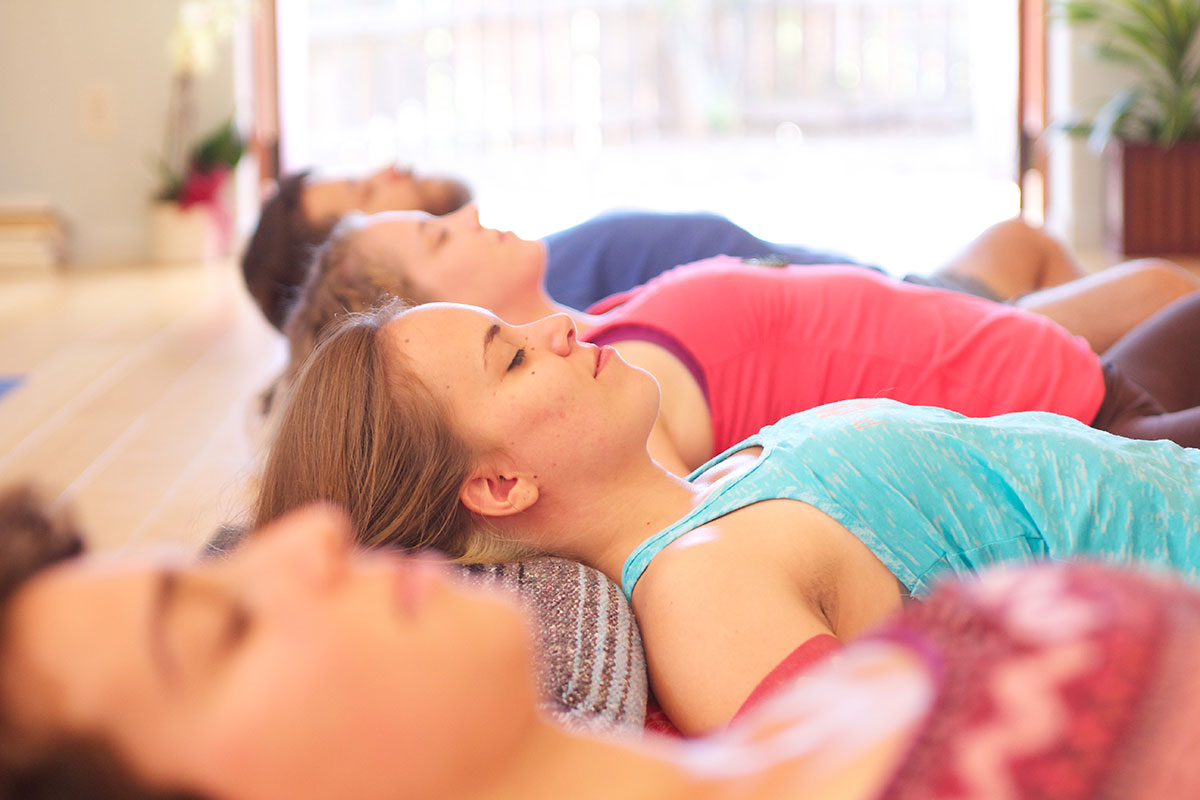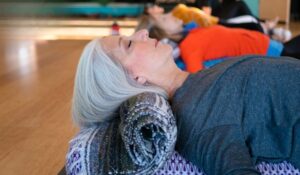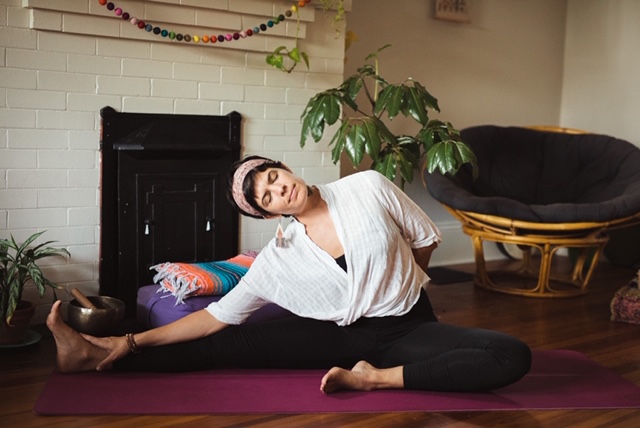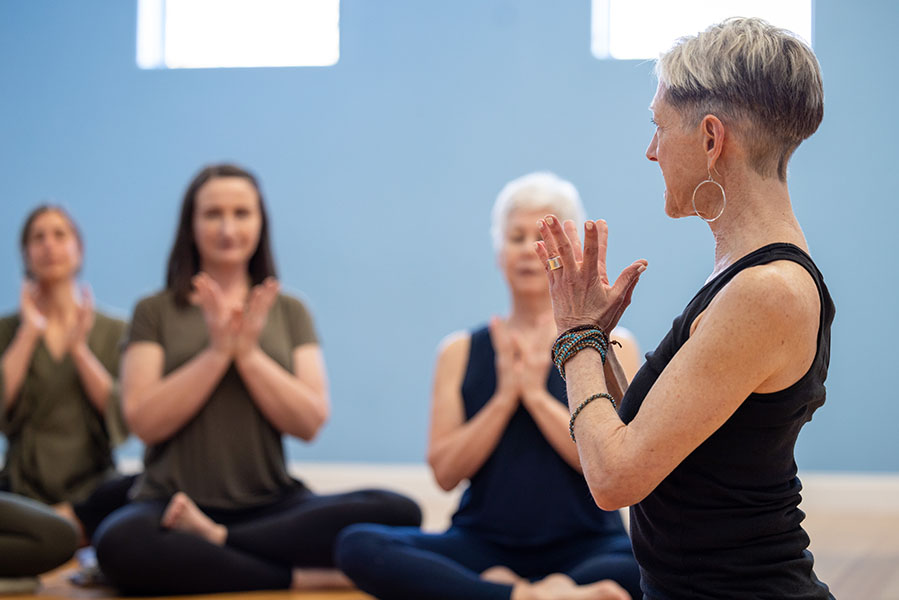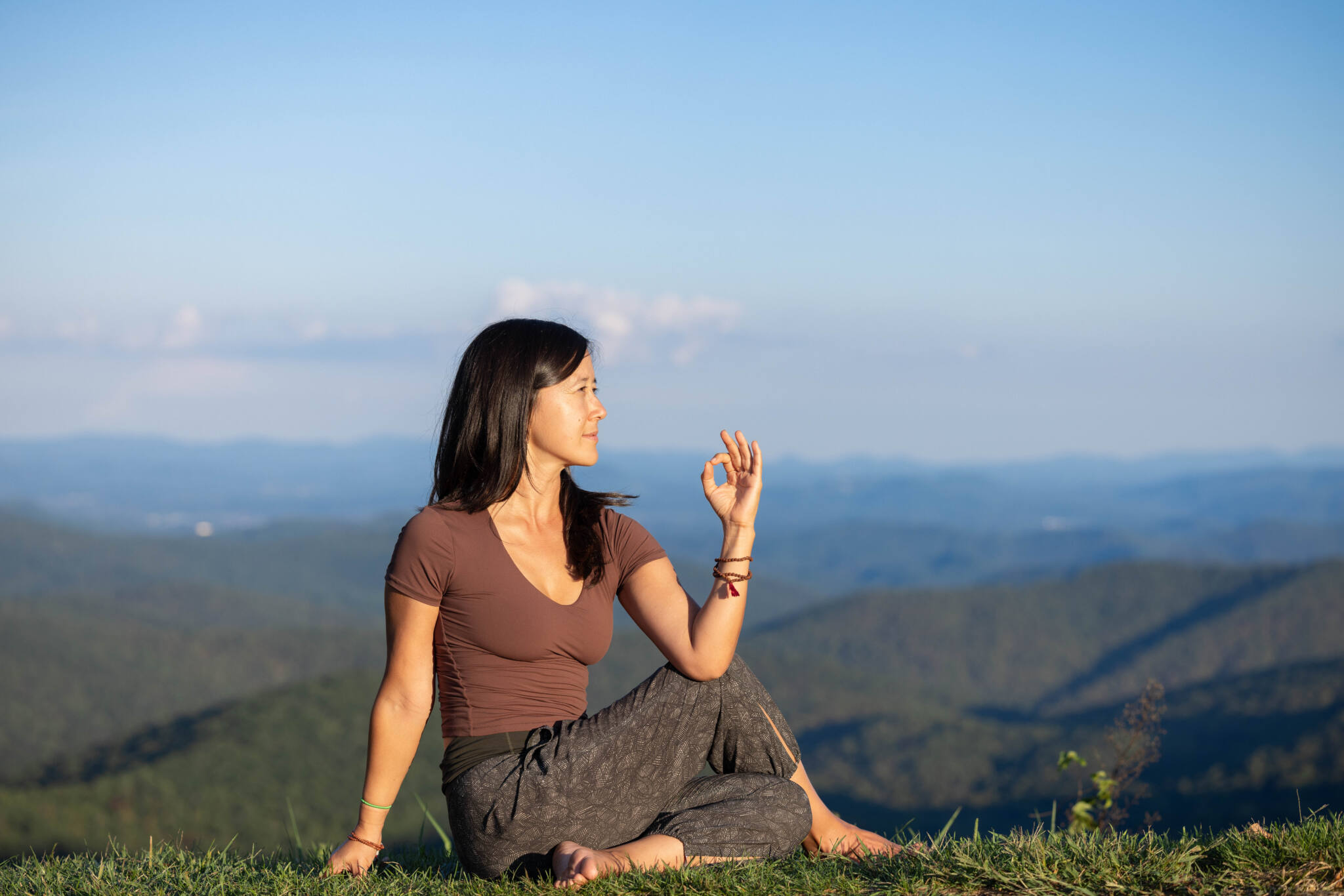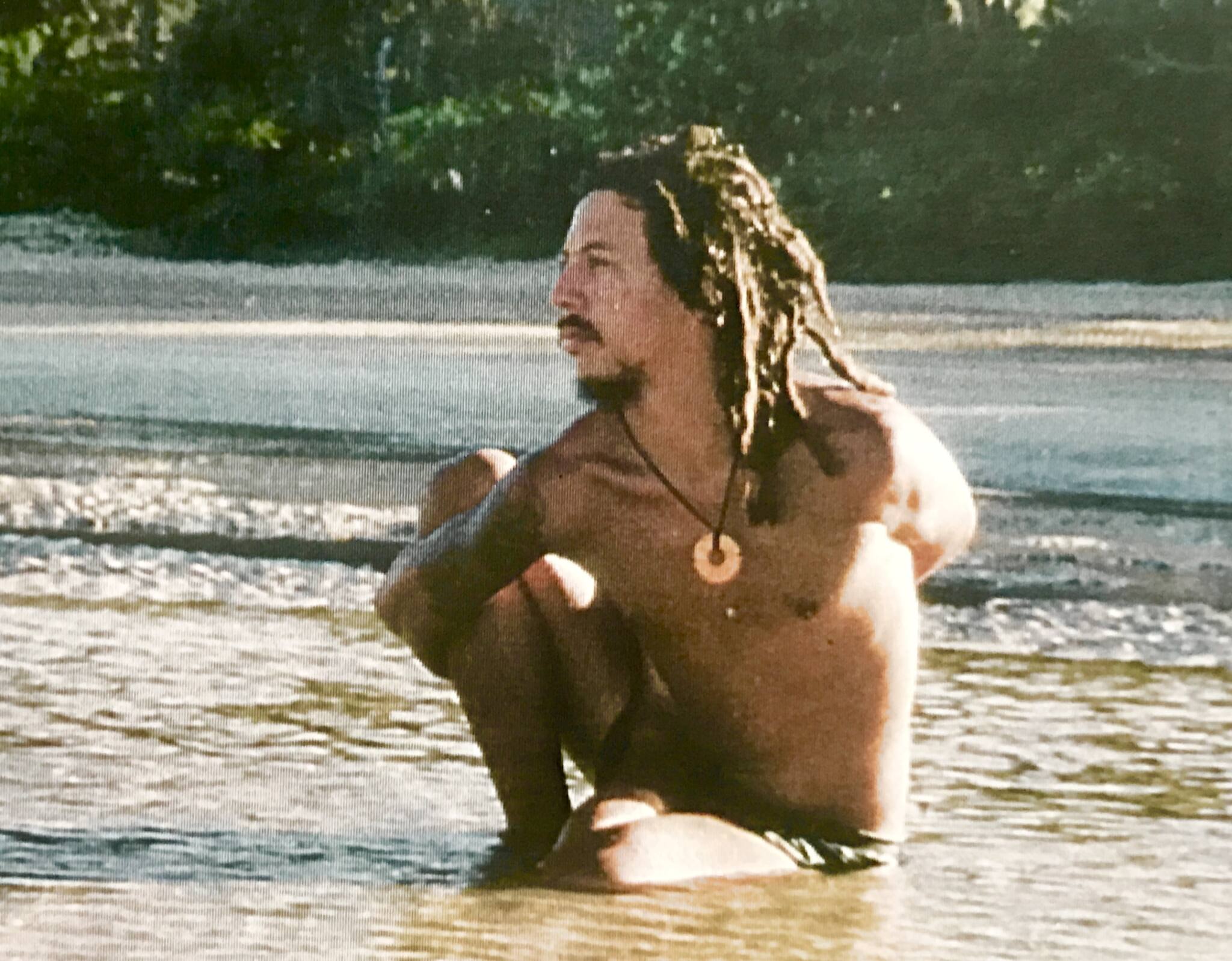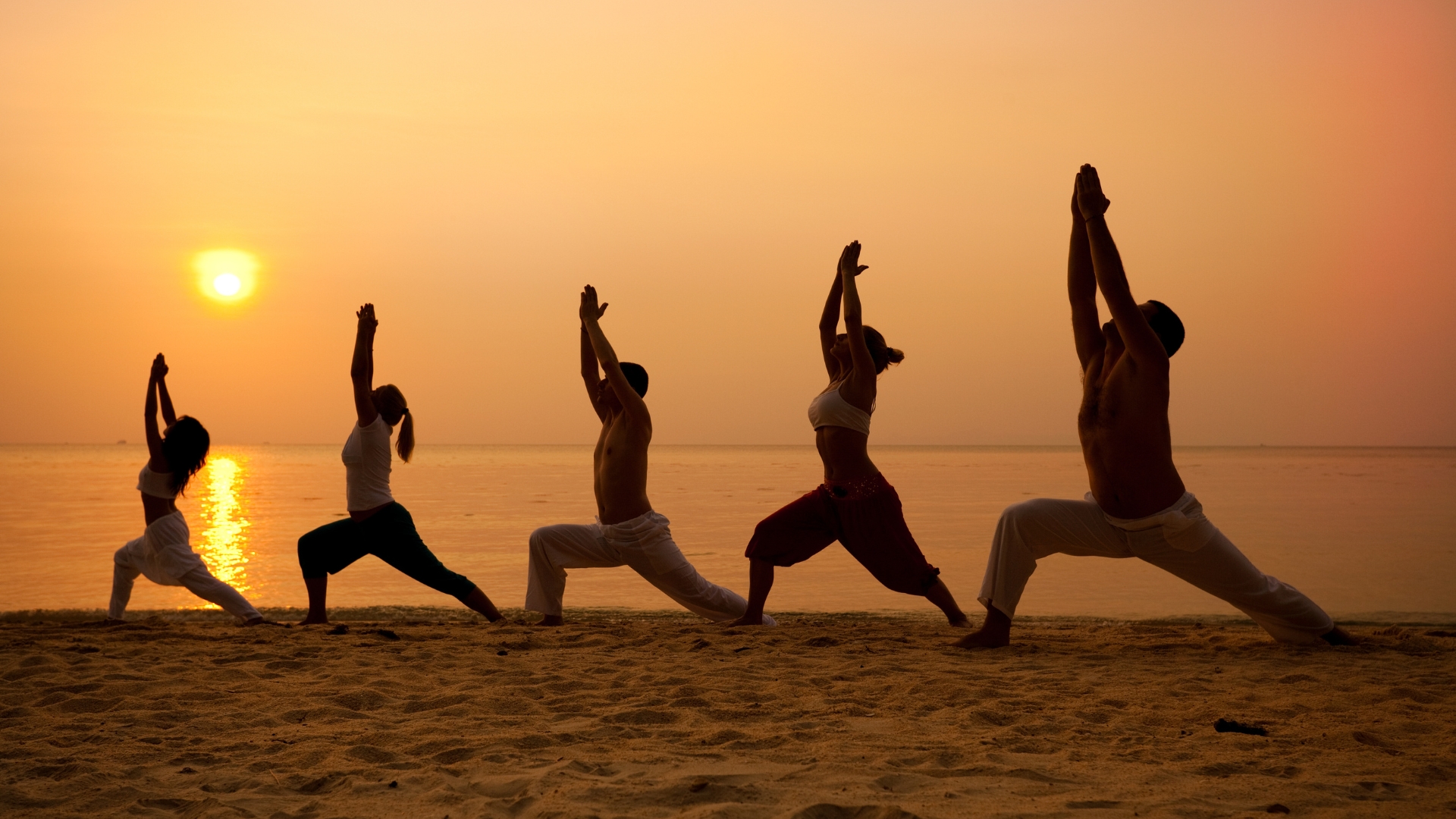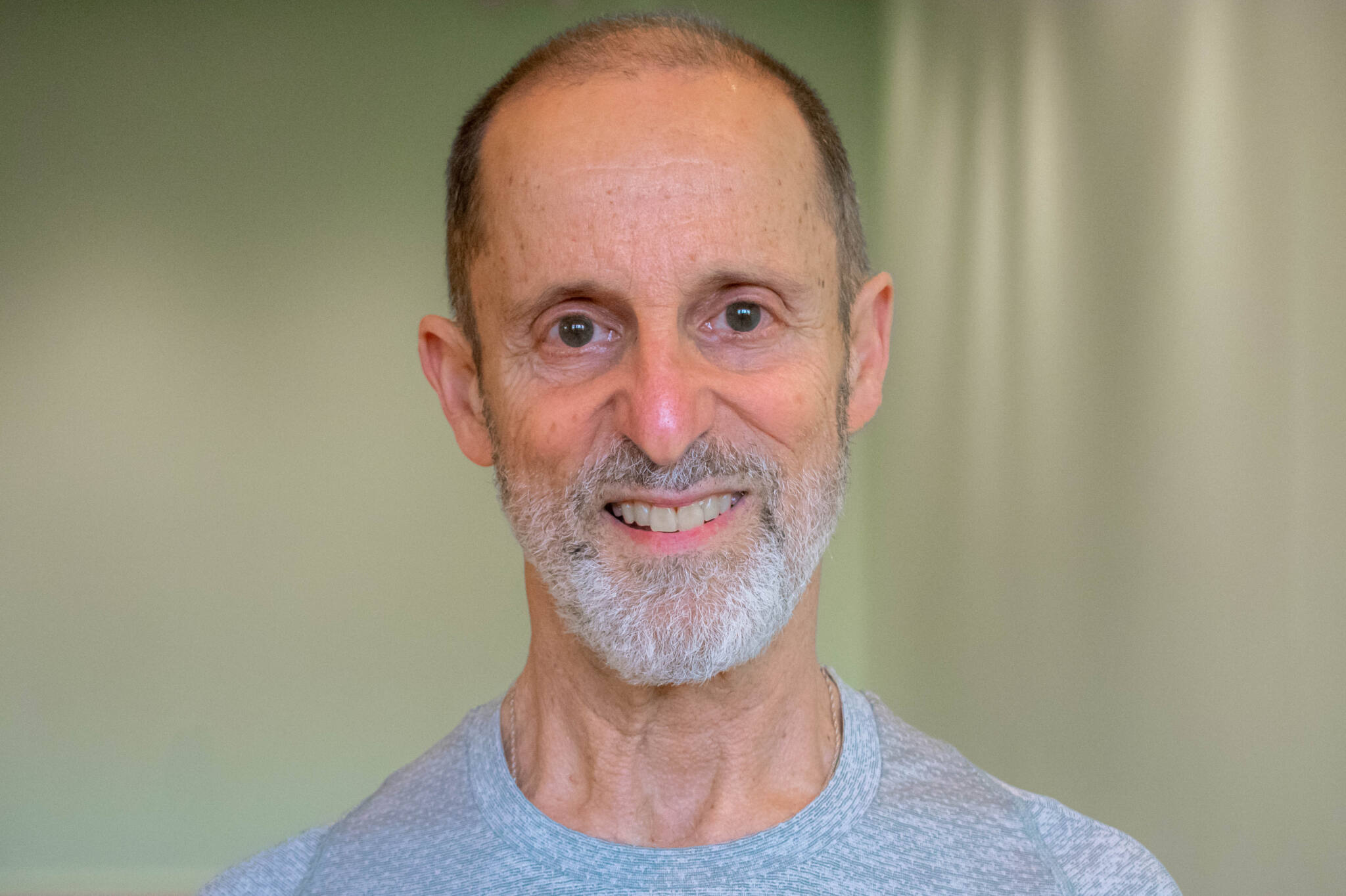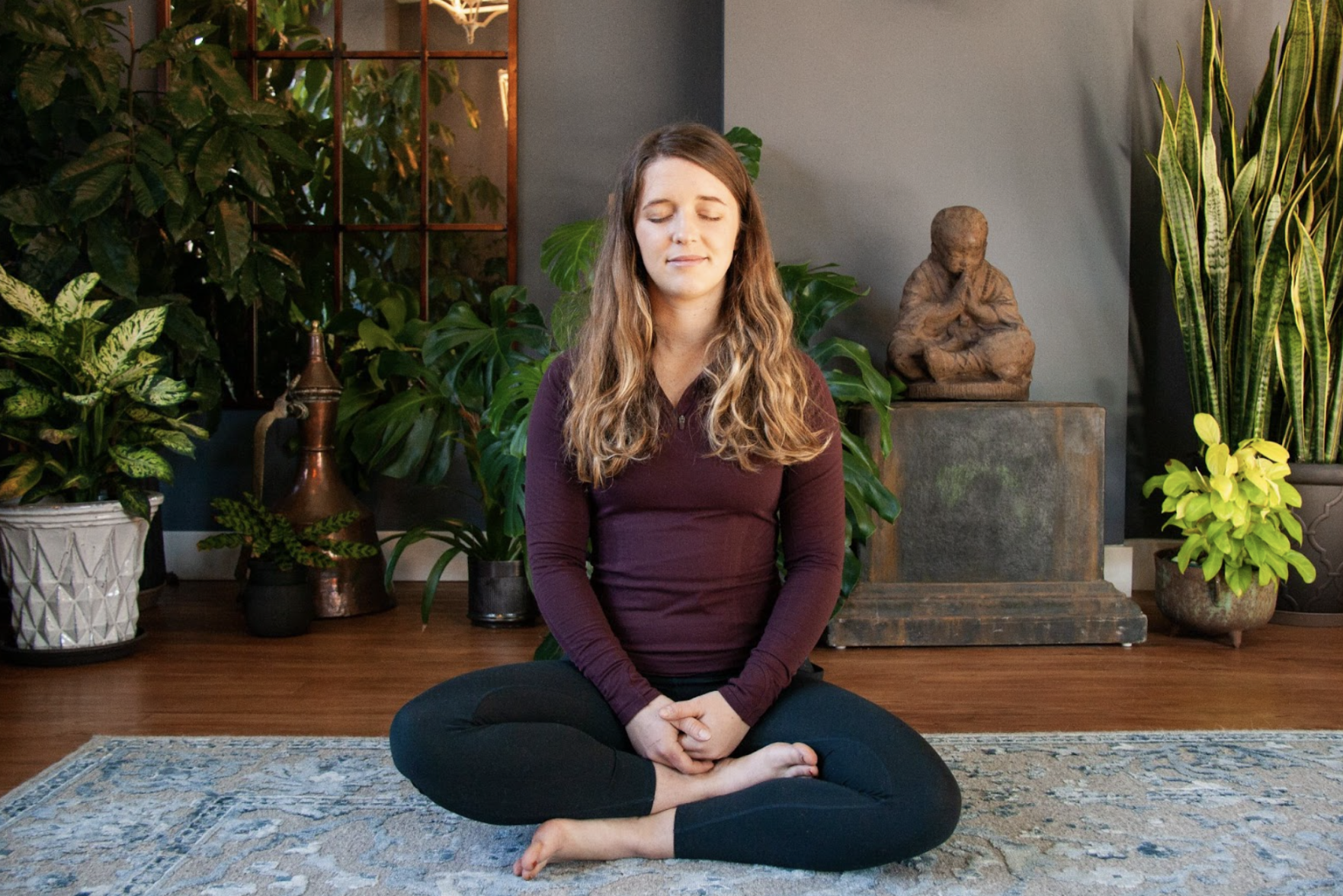Use these 5 easy yoga poses to improve the quality and amount of your sleep.
If you’re struggling with the snooze button in the morning, try adding these five, simple yoga poses to your before-bed routine every night to enhance your sleep experience and wake up feeling refreshed. They can be done while in bed, in any order; we recommend holding each pose for at least five full, deep breaths, or more.
Reclining Twist (Supta Matsendrasana)
Start by lying on your back with your knees bent and feet on the floor, and your arms resting at your sides. As you exhale, bring your knees to your chest and wrap your arms around them. Extend your right leg on the floor, and your left arm palm down beside you creating a half “T” shape. Slowly bring your left knee across your right leg as you exhale, and look to the right. Hold for 10 breaths, and return both knees to your chest before repeating on the opposite side.
Reclining Bound Angle Pose (Supta Baddha Konasana)
Begin seated and bend your knees and draw your feet toward your pelvis, with the soles of the feet touching. Gently lean backward and bring your elbows to the floor. If it’s more comfortable, place a pillow or a bolster under your spine for supported reclining bound angle pose. Gently adjust your position so that your spine is lengthened, and the natural curve of your lower back is maintained. Pull the shoulder blades together, then breathe deeply as you embrace the restorative benefits of this pose.
Legs up on the wall (Viparita Karani)
Start by lying on your back, and extend your legs on a wall, creating an L shape with your body. Close your eyes as you release the tension from being on your feet all day. Rest in this pose, taking deep breaths, for up to five minutes if it’s comfortable.
Easy forward Bend (Sukhasana)
Start with your legs straight in front of you or crossed at the shins. If your hips are feeling tight, you can sit on a bolster, a block, or a folded blanket. With your head, neck, spine, and tailbone aligned, inhale and reach up to lengthen your spine. On your exhale, gently bend forward with your arms extended, then rest your palms, arms, and forehead on the floor.
Child’s Pose (Balasana)
Sit with your toes together, knees wide, and gently bend forward so that your chest and belly are resting on the ground (or on pillow). Turn onto one ear so that it’s resting on the ground. Close your eyes and relax the muscles in the face as you take a full series of deep, restorative breaths.
To learn more about these poses and benefits consider taking your practice into a classroom setting. We have a variety of gentle, restorative and yin yoga to help you sleep more soundly and improve your overall health — mind, body & spirit. Yoga Class Schedule
Frequently Asked Questions
Q: Can yoga really help me sleep better?
A: Yes, yoga can be a powerful ally in supporting restful sleep. Through gentle movement, breath awareness, and relaxation practices, yoga helps calm the nervous system and quiet the mind—both essential for good sleep. Many students find that even a short evening practice can ease the transition from the day’s stress into a more peaceful night’s rest.
Q: What time should I do yoga for good sleep?
A: Practicing 30 to 60 minutes before bed can be a wonderful way to wind down. Choose slow, soothing postures and let your breath guide you inward. The goal isn’t to energize but to soften, release, and prepare your body and mind for rest. Keep the lights low, move slowly, and treat it as a sacred bedtime ritual.
Q: How long should I hold each pose?
A: For a sleep-focused practice, aim to hold each pose for 2–5 minutes, or longer if it feels good. Using props like blankets or pillows can help your body fully relax. There’s no rush—this is your time to slow down, breathe deeply, and settle in.
Q: Which yoga poses are best for insomnia?
A: Restorative poses like legs up the wall (Viparita Karani), reclined bound angle (Supta Baddha Konasana), child’s pose (Balasana), and seated forward fold (Paschimottanasana) are especially helpful. They calm the mind, relieve tension, and support deep relaxation. Ending with a guided Savasana or Yoga Nidra meditation can gently ease you into sleep.
Q: Is yoga for sleep suitable for beginners?
A: Absolutely. Yoga for sleep is gentle, slow, and supportive—perfect for beginners or anyone seeking rest. There’s no need for experience or flexibility. Just come as you are, breathe, and allow your body to soften. This is about creating space for stillness, not striving or doing it “right.”
